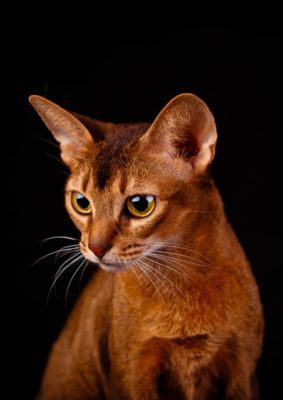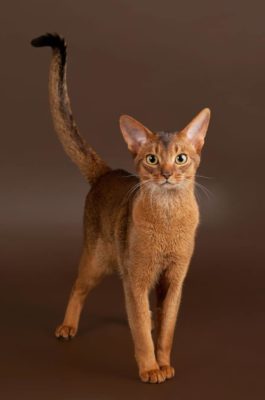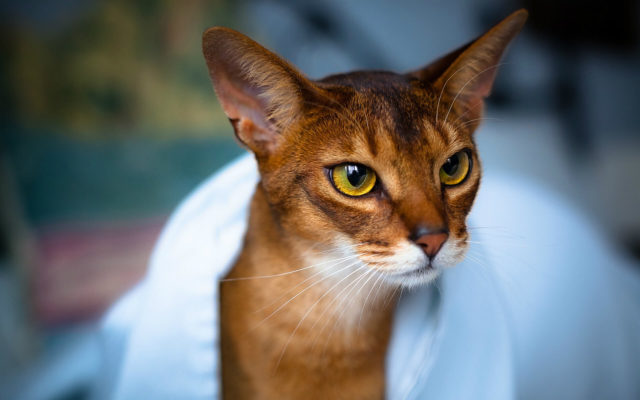Abyssinian
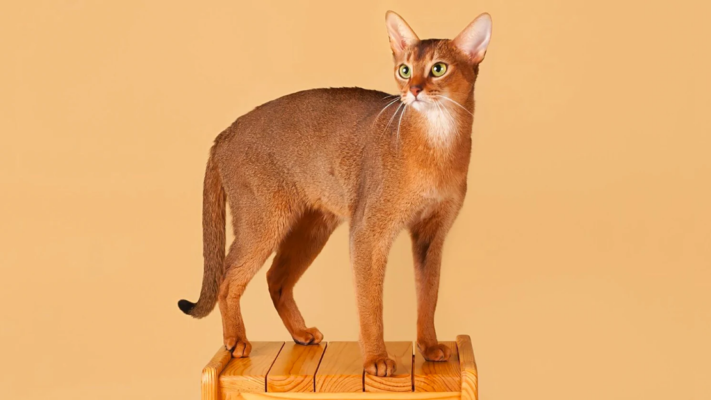
Cats are endowed with a dynamic character and love to explore the world around them. The playfulness of Abyssinians is observed throughout their lives. Animals are kind to the family, intelligent and affectionate, despite their wild appearance. They adore children and rarely show aggression. At the same time, they are clean and respectful of their belongings: they don’t spoil furniture, tear curtains, and don’t overturn flowers.
Table of Contents
Breed Information
| Origin | Ethiopia, Southeast Asia |
| Size | 28-32 cm |
| Weight | 4-8 kg |
| Fur Type | Short-haired |
| Color | Ruddy, sorrel, blue, fawn |
| Lifestyle | Outdoors, indoors |
| Lifespan | 12-15 years |
| FIFe Classification | Category III: “Short-haired and Somali”, Breed designation – ABY |
| WCF Classification | Group 3: “Short-haired” Breed designation – ABY |
| TICA Classification | AB |
| Group | Short-haired cats, cats for kids, cats for apartments |
| Price | $350-1200 |
Breed Photos
Origin History
The breed was named after Abyssinia – modern Ethiopia. But most scientists believe that the first representatives came from Egypt. In the tombs of the pharaohs, in the Egyptian Book of the Dead, there are images and references to the Abyssinian. They are described as “solar” and “lapis lazuli horizon cats”, which characterizes the animal’s appearance. The Egyptians attributed the character of members of the breed to Bastet, the goddess of merriment. Also, the statuettes worshipped by one of the ancient peoples were similar to the Abi.
In Europe, Abyssinian cats appeared in the XIX century. The formation of modern representatives took place in England. Proponents of the theory found references in a book of the second half of the XIX century with a cat Zulu lithograph. It is believed that he was the pet of Captain Barrett-Lenard. But there is no definite proof that Zulu was an Abyssinian.
The Abies was first seen at a show in 1871, where they placed third out of 170. The breed was not officially recognized until 1882. Tassels gave the exoticism of the cats on their ears and stripes on their paws. But after a time, the breeders rid the Abyssinians of their lynx resemblance and tabby coloring. After the war, the Abies split into two subspecies: American and European representatives. Today, animals are more prevalent in the United States and European countries.
Appearance
Representatives of the breed are strong, flexible, with well-developed muscles. Thanks to their long legs, they can jump six times their length. Sexual dimorphism is almost not expressed. American Abies are more graceful than European ones. The head of the cats is wedge-shaped. The muzzle has a soft outline. Large almond-shaped eyes planted widely. Can be different shades: from amber to green. Large ears slightly sloped forward. Limbs, as well as the tail of the Abyssinian cat – long and thin.
The coat is short and shiny. A thick coat with a short undercoat fits tightly to the body. Representatives of this breed are distinguished by warm, bright color with tickling. Officially recognized:
- brown-orange (ruddie);
- blue;
- creamy red (faun);
- brown-red or chestnut (sorrel).
Character
Cats are endowed with a dynamic character and love to explore the world around them. The playfulness of Abyssinians is observed throughout their lives. Animals are kind to the family, intelligent and affectionate, despite their wild appearance. They adore children and rarely show aggression. At the same time, they are clean and respectful of their belongings: they don’t spoil furniture, tear curtains, and don’t overturn flowers. They must be treated with respect. They will not tolerate anger or aggression from their owners.
Cats do not need help during childbirth or in raising their offspring. They were spotted as excellent parents. But time to play with the pet should be allocated. Otherwise – Abyssinians can become depressed and sick.
Care
Cats need care for a long and healthy life. In general, they are unpretentious. Introduce the kitten to the new home gradually, give time to get used to the environment. Abi gets used to the litter box with natural litter or the toilet by themselves. Representatives of the breed love water procedures. But frequent bathing is not recommended – once during the molting period. Use a special shampoo for short-haired cats. Brush their teeth and ears. Once a week, comb your hair with a special brush.
Education
It is better to train an Abi in the form of a game. Don’t shout or hit the cat – this will only instill fear in the cat. Exercise an hour or two after meals, but not immediately before or after sleep. The Abyssinian cat learns the rules of the house and does not change them: what you “may not” today must not become “allowed” tomorrow. If the animal is reluctant to obey commands, give it a treat and praise. Never punish the Abi with food – the result will be the opposite.
Common Diseases
Diseases in Abyssinian cats are rare. They are active and healthy pets. With proper care, animals live up to 15-20 years. If diseases do occur, they are due to poor diet or genes. Among them:
- hip dysplasia;
- dislocation of the kneecap;
- renal amyloidosis;
- retinopathy of the retina;
- anemia;
- dental problems.
Nutrition
It is recommended that you choose kitten food up to one year of age and give it three times a day. If possible, buy the food brands that the breeder fed the pet. After one year, you can switch to two meals a day and adult food. Among natural foods, emphasize cooked meat and fish, vegetables, and fruits.
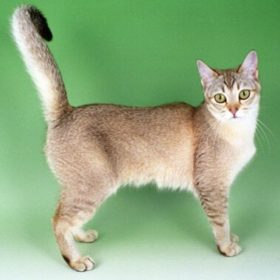 Burmilla Shorthair
Burmilla Shorthair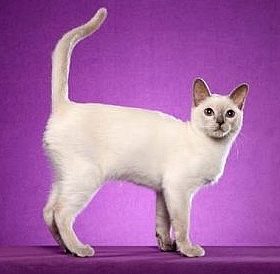 Tonkinese
Tonkinese Kanaani
Kanaani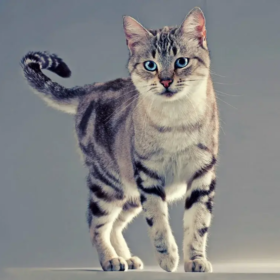 Asian (Tabby)
Asian (Tabby)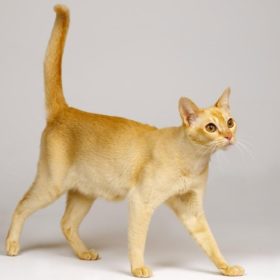 Ceylon
Ceylon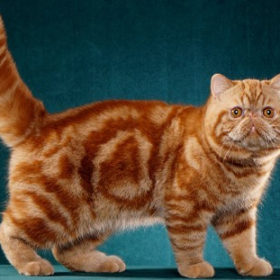 Exotic Shorthair
Exotic Shorthair